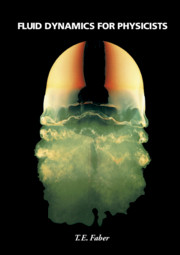3 - Gas dynamics
Published online by Cambridge University Press: 05 June 2012
Summary
Introduction to compressible flow
When the fluid velocity varies from place to place by amounts that are no longer small compared with the velocity of sound, the compressibility of the fluid cannot be ignored. Bernoulli's theorem does not have to be abandoned in these circumstances but it does need to be reformulated, and reformulation requires knowledge of the equation which relates pressure to density. The necessary equation is well known for ideal gases, and it is on gases – and on air in particular, which at normal temperatures and pressures conforms closely to the ideal model – that we focus attention in this chapter. As we shall see, the reformulated version of Bernoulli's theorem can be applied in an elementary way to a number of interesting phenomena which have to do with compressible flow of air. Among these are the shock fronts which develop following explosions and which accompany supersonic projectiles, and it is chiefly because these shock fronts are in many respects analogous to the tidal bores and hydraulic jumps discussed in §2.16 that this chapter stands where it does.
For the time being we shall continue to ignore viscosity. Neglect of viscosity is usually justified when the Reynolds Number is large compared with unity, for reasons which were outlined in §1.9, and most of the phenomena to be discussed below occur at flow rates where Re is 105 or more.
- Type
- Chapter
- Information
- Fluid Dynamics for Physicists , pp. 78 - 118Publisher: Cambridge University PressPrint publication year: 1995



